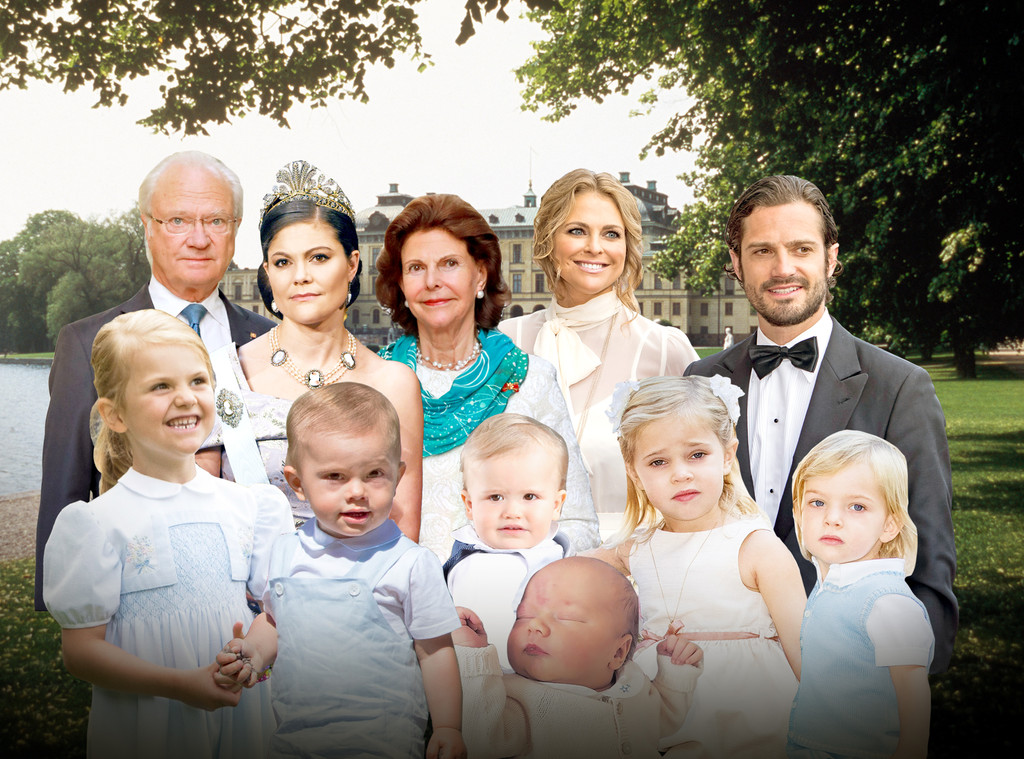
Getty Images; E! Illustration
The United Kingdom’s royal family has seemingly cornered the market on intrigue, but their neighbors to the northeast haven’t exactly been resting on their historical laurels.
The sprawling Swedish monarchy has actually been going toe-to-toe with the Brits for centuries as far as the stuff of legend goes (England had Henry VIII and Queen Elizabeth I, but…Vikings!), and though nowadays a British royal can’t say a word without it being news, the Swedes know how to make any kind of headline—and they’ve made them all.
Presided over for 46 years by King Carl XVI Gustaf, the Swedish royal family has been enmeshed in its own share of controversy, most of which has ultimately served to entertain more than offend a kingdom that relishes juicy royal headlines as much as the next parliamentary democracy but still holds the family in a certain untouchable esteem.
Because they’re their royal family, after all.

Chris Jackson – Pool/Getty Images
They’ve flown relatively under the radar on a global scale when compared with their ever-spotlit neighbors across the North Sea, but romance and weddings, not to mention all of the new grandkids running around the palace, has certainly helped push the heirs of the House of Bernadotte into the headlines more often.
The Swedes also have a progressive streak that has resulted in them, if not exactly reinventing, then at least modernizing their own court. As Queen Elizabeth II‘s heirs understand all too well, it’s imperative for them to adapt to this rapidly changing world, which while it doesn’t exactly need royalty in its midst, does exactly want to do away with the system, either. (Though tell that to the persistent factions in the U.K., Sweden and beyond who would gladly do away with monarchies tomorrow.)
The ongoing modernization was reflected last week by the announcement that King Carl XVI had rescinded the royal titles of five of his grandchildren, knocking them off the ladder of ascendancy. While the technical reason was to decrease the stress on public funds that financing the royals inevitably is at times, their mother, Princess Madeleine, called the move a “greater opportunity” for her kids “to shape their own lives.” (Queen Elizabeth’s daughter, Princess Anne, who also chose not to procure titles for her children decades ago, would understand.)
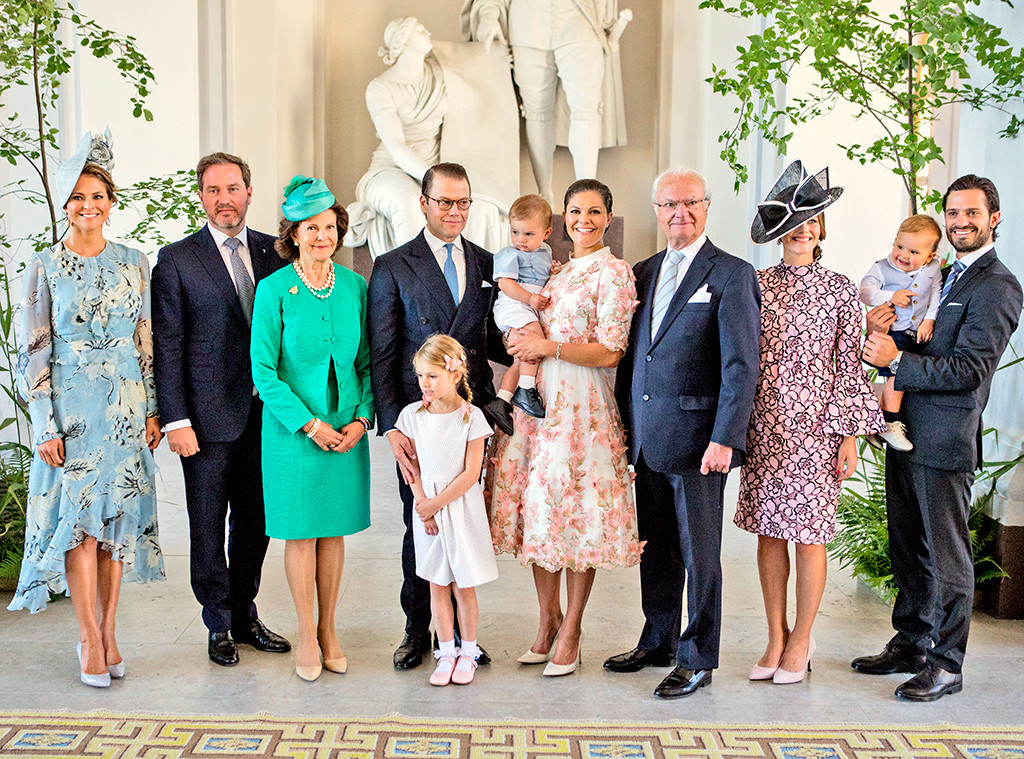
Christine Olsson /TT via AP
King Carl XVI has four older sisters, none of whom had a shot at the crown when they came into this world due to traditional primogeniture—that centuries-old royal system that mandated sons would always be ahead of their sisters in line, while the son of a monarch’s deceased brother would be next in line ahead of the monarch’s next-youngest brother.
It wasn’t until 2011 that the United Kingdom changed the law so that a possible firstborn daughter for Prince William and Kate Middletonwould be next in line after her father. (Prince George was born first and therefore Princess Charlotte and Prince Louis follow him, ahead of their uncle, Prince Harry. And, fun fact, King Carl XVI is roughly 205th in line to the British throne, because it is a small, small royal world.)
But the Swedes changed the law back in 1980, making King Carl XVI’s eldest daughter, Princess Victoria, Crown Princess Victoria—and, at 3 years old, first in line to the throne, newly ahead of her then 1-year-old brother, Prince Carl Philip. Kate and William took tea with Victoria and her husband, Prince Daniel, at their home in Stockholm, Haga Palace, in 2018.
Back in 1973, however, it was the baby of the family who inherited the crown from his grandfather, King Gustaf VI Adolf. King Carl’s father, Prince Gustaf Adolf, died in a plane crash in Denmark in 1947, when his son was 9 months old.

Keystone-France/Gamma-Keystone via Getty Images
Reminiscent of what Britain’s Prince Charles is facing now, as a future king who never particularly endeared himself to the people, King Carl XVI has said that he never felt fully embraced by the Swedish people until he was in middle age. In the 1980s, for instance, he provoked anger in his own country and next door when he publicly slammed the Norwegian prime minister over the cruel practice of seal hunting—though international outrage at the time did result in Norway banning the killing of baby seals for a year. (The European Union banned the trade of seal products in 2009, pretty much killing the market.)
Carl had a string of girlfriends, liked sports cars and made no pains to not act like a wealthy, privileged playboy. He struggled with dyslexia in school but studied finance and economics and, as an avid outdoorsman, he developed a lifelong interest in environmental issues. He met his future wife, German-Brazilian Silvia Sommerlath, a former flight attendant and trained interpreter, during the 1972 Summer Olympics in Munich, where she was working as an educational host. They just “clicked,” the king said later.
ABBA performed at a gala in their honor the night before the glamorous couple’s wedding on June 19, 1976. Queen Silvia was the first Swedish queen to have had a professional career before becoming a royal.
But even settling down didn’t fully win the people over. It was said that it wasn’t until a number of Swedes died in the December 2004 tsunami in Thailand that the king stepped up as a truly unifying figure, opening up about the death of his own father in a well-received speech to the people.
“I wish that I had a good answer,” Carl XVI said. “If I only as a king, like in the fairy tales, could make everything right and end the tale with ‘and so they lived happily ever after.’ But I am just like you, simply a grieving, searching human being.”
And still, the paradoxical picture of the king remained.
“He does all the things that aristocrats tend to do,” journalist Thomas Sjöberg, author of the King Carl XVI biography The Reluctant Monarch, told the U.K.’s Telegraph in 2011. “Expensive holidays on the French Riviera, travelling all over the globe, throwing ridiculously expensive parties, socializing with lots of women when his wife is not present. The Swedish people seem to be very tolerant, and partly that’s because they don’t see him as a grown-up person.”
Meanwhile, three of the king’s older sisters—Princess Margaretha, Princess Désirée and Princess Christine—lost their Royal Highness designation when they married commoners. Only Princess Birgitta remained HRH when she married Prince Johan Georg.
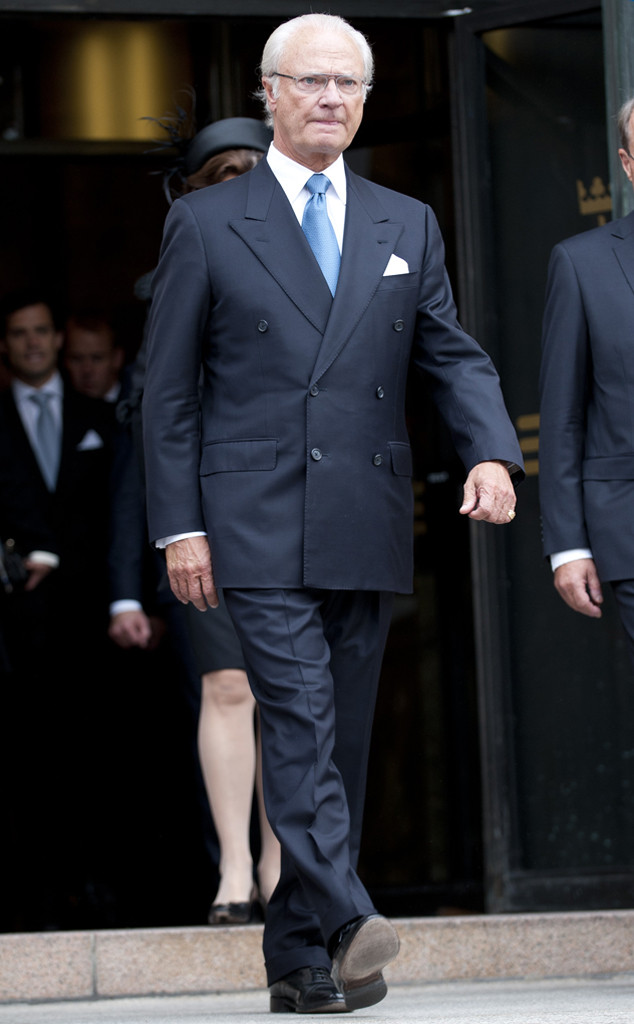
Mark Cuthbert/UK Press via Getty Images
But King Carl XVI, with his ongoing motto of “For Sweden—with the times,” set out to change the centuries-old system. He installed the new succession rules in 1980 (retroactively applying it to Victoria, who was born in 1977), and later on made it so the Crown Princess wasn’t in danger of losing her title when she married her personal trainer in 2010, on her parents’ wedding anniversary. (We’ll get to that.)
Yet the progressive king’s playboy past (and not-so-distant past) would come back to haunt him. Sjöberg’s 2010 book alleged that, in the earliest years of his kingship, Carl XVI frequented sex parties at a Stockholm nightclub owned by an ex-gangster, Mille Markovich, and would have the Swedish secret police ensure that he didn’t leave evidence of his participation behind.
In 2011—dubbed the king’s own “annus horribilis” by the British Telegraph—Markovich told Swedish newspaper Aftonbladet that he had “live evidence” of the king’s indiscretions and could prove it was all true in one fell swoop. “It was disgusting how the king made these huge promises to these naïve suburban girls in order to have sex with them,'” he said. “He appeared never to keep his word about helping them with their careers or jobs after he got what he wanted.”
In December 2011, Aftonbladet reported that the king—who had previously denied any knowledge of the negotiations—may have known that a close confidante of his had been trying to negotiate a payment to Markovich in exchange for a retraction of those scandalous claims.
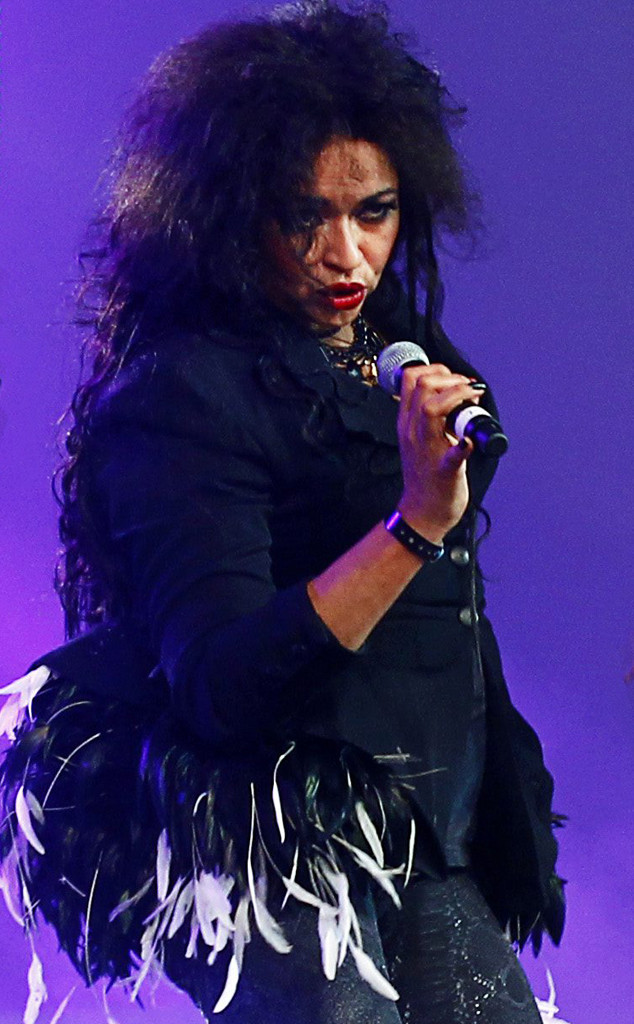
Aftonbladet/IBL/ZUMA Wire
Also alleged in The Royal Monarch: a $10,000 trip to an Atlanta strip club when the king was in town for the 1996 Summer Olympic Games, and an affair in the late 1990s with Swedish-Nigerian pop star Camilla (well, that’s quite a coincidence) Henemark that Queen Silvia was aware of but was helpless to stop. (Henemark refused to comment at the time.)
“I have spoken with my family and the Queen and we choose to turn the page and move forward because, as I understand, these are things that happened a long time ago,” the king said in November 2010, addressing reporters at an outdoor press conference upon returning from an elk hunt.
A palace spokesperson followed up saying that the king had wanted to speak out in his own words and had done exactly that.
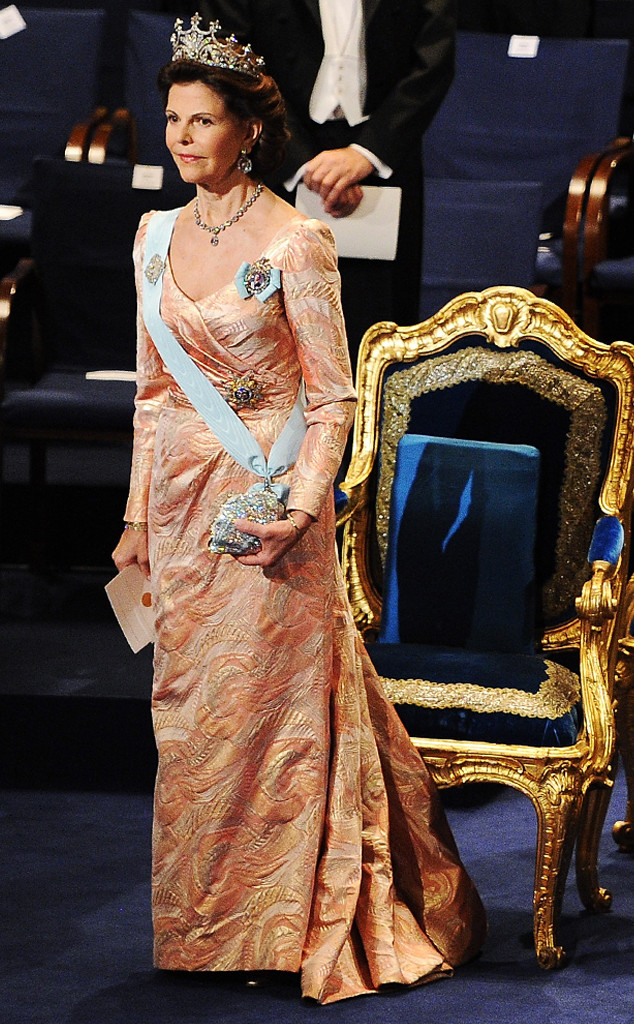
Pascal Le Segretain/WireImage
Queen Silvia had a slightly better annus, though it didn’t start off so great: A documentary that aired in November 2010 on Sweden’s TV4 alleged that her father, Walter Sommerlath, became a member of the Nazi Party in the 1930s when the family lived in Brazil and made his fortune upon their return to Germany during World War II, manufacturing armaments at a factory that he had procured dirt cheap from a Jewish owner who was desperate to flee the country.
A previous documentary had included the Queen’s explanation that her father only joined the Party to keep his family out of trouble and that he wasn’t involved “politically.” Moreover, the factory produced toys and hair dryers and gas masks, not weapons, she said.
A palace statement said that the Queen had no comment but of course she regretted that her father was a member of the Nazi party. However, she “first got knowledge of his membership in adulthood, and she never had the opportunity to discuss this with her father.”
In the meantime Silvia set out to clear her family’s name and an investigator issued a report in August 2011 that Sommerlath had traded part of a coffee plantation in Brazil for the factory, which helped the owner and his family escape to South America.
“I wasn’t afraid of what I would find when I started searching in the archives. I knew there was no reason to worry,” Queen Silvia told the local Goetheborgs-Posten after the investigation, which she financed, concluded.
The Swedish people who were used to the royal family’s scandals were shocked and morbidly fascinated by news of the king’s even-wilder-than-they-realized ways, but ultimately they weren’t devastated. “If it would have been the [prime minister], he would be forced to resign the following day,” Sjöberg told the Telegraph. “There would be a public outcry, severe political consequences for Sweden, political chaos and a constitutional crisis.”
But frankly, as the Brits have proved a dozen times over, royals are especially adept at surviving scandal. And so the Swedes were the talk of the continent, but chugged on to hold court another day.
Crown Princess Victoria announcing her first pregnancy that summer certainly served as a welcome distraction.
The regal brunette beauty, who made her first public speech at 18 and has been executing her royal duties—philanthropy, appearances, enhancing public morale, serving as a dignified face of Sweden—ever since, has become perhaps the most beloved member of the royal family over the years.
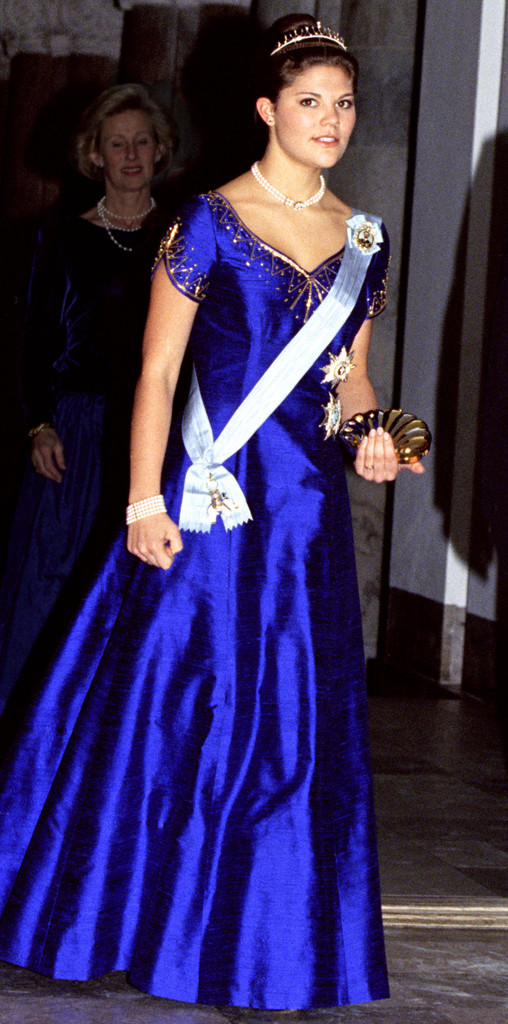
Antony Jones/Julian Parker/UK Press via Getty Images
She shattered the staid royal mold when the palace confirmed in November 1997 that the princess suffered from anorexia and had put university on hold to get treatment in America. She attended Yale University for five semesters and Victoria later admitted that she was grateful for the anonymity that being a “normal” college student in the United States provided.
“I needed time to sort things out and get my balance back again,” Victoria recalled in a 2017 documentary marking her 40th birthday. “I needed to get to know myself, discover where my limits were, not constantly push myself too much.”
In a wide-ranging interview with Sweden’s SVT, the Crown Princess also talked about having dyslexia, like her father, and her ongoing struggle with anxiety.
“The performance anxiety I had [20 years ago] is still there,” she said. But “I’ve been given different kinds of tools and learned how to manage it.”
The princess had a longtime boyfriend whom she’d attended school with in Sweden, Daniel Collert, and though he reportedly moved to the U.S. with her they ultimately broke up in 2001. It was first reported in May 2002 that she was dating Daniel Westling, her personal trainer at a Stockholm gym.
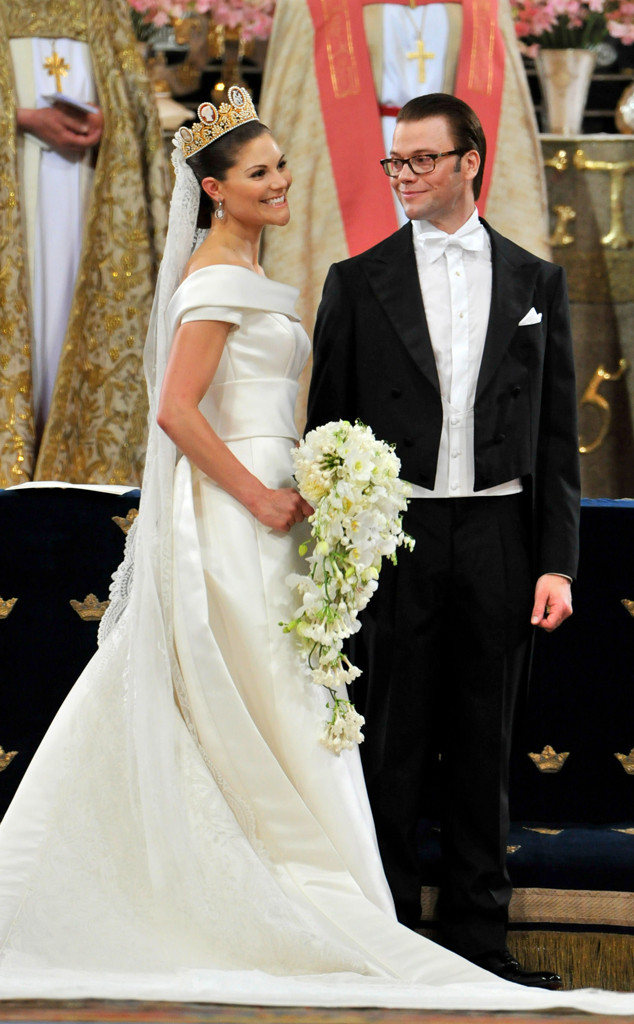
Jonas Ekstromer – Pool/WireImage
Swedish media were obsessed with the pairing, and they were first photographed kissing at a friend’s birthday party that July. While simultaneously being enamored by the pair, the press of course still tried to uncover all the dirt they could on the baseball cap-sporting commoner (whom the king reportedly wasn’t a big fan of, either) and the media poked fun at his small-town pedigree. That, combined with Westling’s obvious discomfort around the paparazzi, nearly spelled the end of their relationship. But true love—plus a new wardrobe and some tutoring in blue-blood ways and royal protocol from various experts who made up the “Prince’s school”—won in the end.
Victoria confirmed in the 2009 biography Victoria—Queen of the Time that her parents were concerned about the match, but only because they wanted to make sure Daniel was fully on board with what would be expected of him. “They wanted to make it clear that I would get the best possible support and backing for my job now and the future,” she said, a quote could just as easily have been ripped from The Crown.
An engagement announcement was eagerly anticipated for years, but the couple didn’t actually announce their betrothal until 2009. On June 19, 2010, they married at Stockholm Cathedral in the most hotly anticipated royal wedding since Princess Diana married Prince Charles in 1981 (and until Kate married William the following year). More than 1,200 guests were invited, and the entire country made a weekend holiday out of the occasion. The newlyweds enjoyed their first dance as husband—the newly minted Prince Daniel, Duke of Västergötland—and wife at a gala that night at her parents’ residence, Drottningholm Palace.
At the reception, Daniel told their assembled guests that, the night before Victoria embarked on a month-long tour to China at one point during their courtship, she spent the whole night writing and before she left gave him a box containing 30 love letters, one to read every day she was away.
“Dear friends, I would like to thank you, the Swedish people, for having given me my prince,” Victoria, who said “I do” in a Pär Engsheden gown, said to her wedding guests, per the English translation in Hello! magazine. “My husband and I are unbelievably happy and grateful for so many of you coming here to celebrate with us, it means much more than you thought to us, thanks.”
The father of the bride also reiterated at the wedding that he was nothing but happy to be welcoming Daniel into the family.
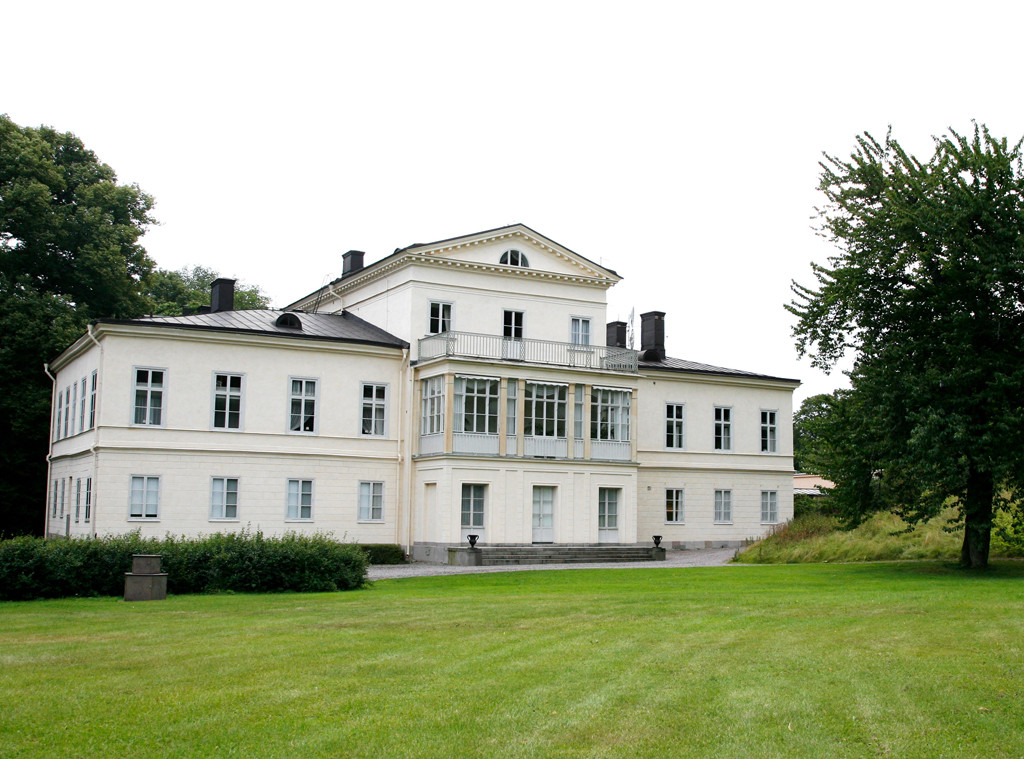
Christopher Hunt/WireImage
Princess Victoria and Prince Daniel make their home at Haga Palace, which after being used by the government for decades as a place for visiting dignitaries to stay, was transferred back to the royal court and presented to them as a wedding gift. King Carl XVI was born at Haga, but he and Silvia raised their three children at Drottningholm.

Andreas Rentz/Getty Images
The young couple first welcomed an heir of their own in February 2012 when Princess Estelle was born to much national fanfare. “There is a radiant, happy new mother with a baby in her arms,” proud dad Prince Daniel told reporters at Karolinska Hospital. “There is something special about becoming parents.” The doctor who delivered Sweden’s first royal baby in 30 years said he hadn’t left Stockholm since New Year’s to ensure that he’d be there when the moment arrived.
The now 7-year-old Estelle, whom her mother has described as “curious, social and brave,” is second in line to the Swedish throne. Her brother, Prince Oscar, was born in March 2016, even though the little princess famously wished for a hamster instead of a sibling.
Meanwhile, Estelle and her dad boosted their international caché in October 2017 when a video of the princess doing somersaults went viral. Prince Daniel talks (in Swedish) about his nonprofit Generation Pep, which works to educate kids about the importance of staying active and helps provide opportunities to do so, and then even gets in on the somersault fun himself.
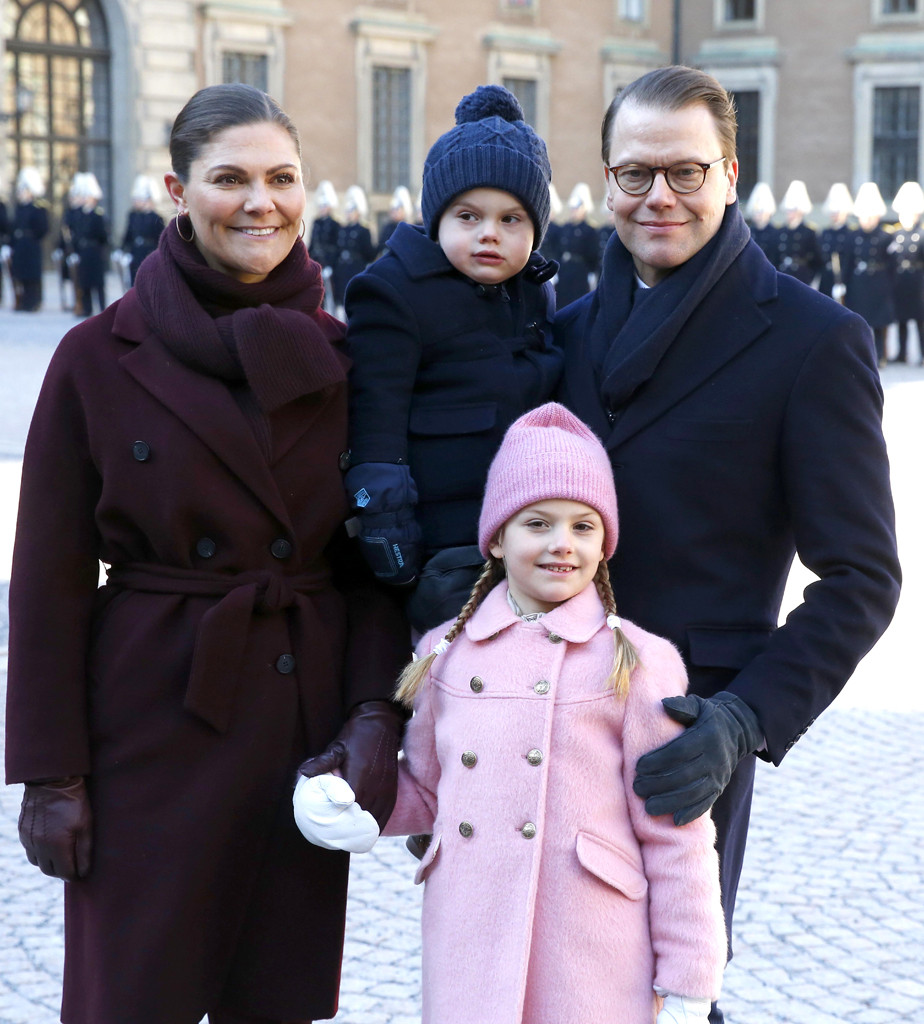
Michael Campanella/Getty Images
Victoria celebrated her 42nd birthday in July with her whole family, including parents and siblings, with Madeleine and her husband flying in from London for the occasion. In August, she joined her dad at World Water Week 2019 in Stockholm, a global conference that addresses international development and sustainability issues.
Nine years ago, while Princess Victoria was getting prepared to settle down with Prince Daniel, her younger brother, Prince Carl Philip, was just beginning to stir things up.
At the time, the dashing prince—a world-class athlete who served in the Swedish Navy (he was appointed major in 2014), studied graphic design and loved racing cars—had broken up with his longtime girlfriend and moved on with model and yoga teacher Sofia Hellqvist, who had also been a finalist on the Survivor-esque show Paradise Hotel in 2005.
Between her reality TV past and a portfolio of racy photo shoots (one involving going topless and a python), Sofia was rumored to be another tough pill for the king and queen to swallow. With the press both all over them and seemingly against them from the start, their romance was saddled with an extra layer of complications from day one.
Ultimately, however, adversity only made them grow stronger and closer as a couple, and they announced their engagement in June 2014.
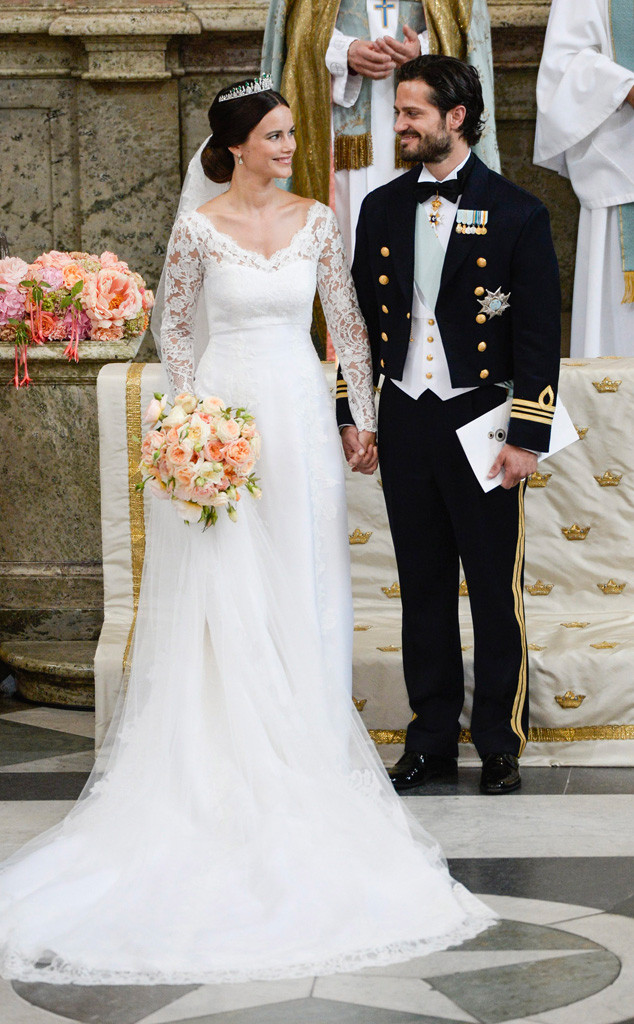
Mikael Fritzon/ TT via AP
Not that that calmed the press in any way.
In a TV special called The Year With the Royal Family, Hellqvist said, “A lot has been written over the years, not only following our engagement. For me it’s pretty boring, [my modeling and reality TV days] happened 10 years ago and I’ve moved on with my life. But no regrets. Experience shapes a person.”
The prince denied reports that his family didn’t approve of the match, telling Sweden’s TV 4 in October 2014, “My parents and my sisters were curious about her, open, and welcomed her with a big hug.”
Princess Victoria—who understood what it was like to be the subject of so much scrutiny—even planned her brother’s bachelor party (certainly one way to ensure the festivities don’t get out of hand) and spent a bachelorette weekend in the countryside with her future sister-in-law.
“Carl Philip is my best friend,” Sofia said in a joint interview with her fiancé that aired a few weeks before their wedding. “[He is] the person I talk to the most. He’s so smart and I feel so secure with him.” The prince added, “I feel extremely confident, stable and balanced when Sofia is by my side. And I’ve felt that way from the beginning.”
Needless to say, Prince Carl Philip and his bride, Princess Sofia (wearing Ida Sjöstedt), stunned on their wedding day, June 13, 2015. And not only was their ceremony televised, but cameras were allowed in to capture most of the reception too.
The couple welcomed their first child, Prince Alexander, in April 2016, and son No. 2, Prince Gabriel, arrived on Aug. 31, 2017.
Meanwhile, again throwing it back nine years, to when Princess Victoria was about to get married and Prince Carl Philip was raising eyebrows by stepping out with Sofia, their sister, Princess Madeleine, was starting over.
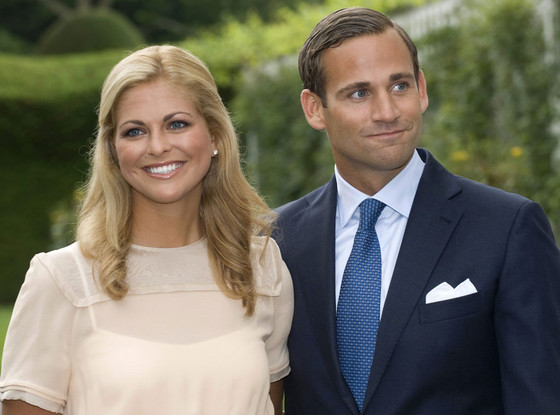
MOHD RASFAN/AFP/Getty Images
She had been engaged to businessman Jonas Bergström, the lawyer having popped the question while they were on holiday in Capri in 2009 after years of dating. They had already postponed the wedding once, claiming too much was going on (such as Victoria’s looming nuptials), but in April 2010 Madeleine ended the engagement for good following a report that Bergström had cheated with a 21-year-old university student while on a ski trip. The young woman told a Norwegian tabloid that she didn’t realize who Bergström was and she never would have done such a thing if she’d known.
The princess opted for a change of scenery: She moved to New York to work for the World Child Foundation, which was co-founded by Queen Silvia and also has headquarters in Sweden, Germany and Brazil. The palace didn’t confirm that the engagement was over until three days after Madeleine had left Stockholm, saying mildly, “They have decided that the best for them is to go their separate ways.”
Madeleine settled in Manhattan (she did jet back to Stockholm for her sister’s wedding weekend) and promptly met British-American businessman Christopher O’Neill (though not before local tabloids linked her to both Paris Hilton’s ex Stavros Niarchos and the New York Rangers’ star goalie Henrik Lundqvist). The princess’ engagement to O’Neill was announced in October 2012 and they were married on June 8, 2013, at the Royal Palace. Bucking the tradition of going with a Swedish designer, the bride wore Valentino.
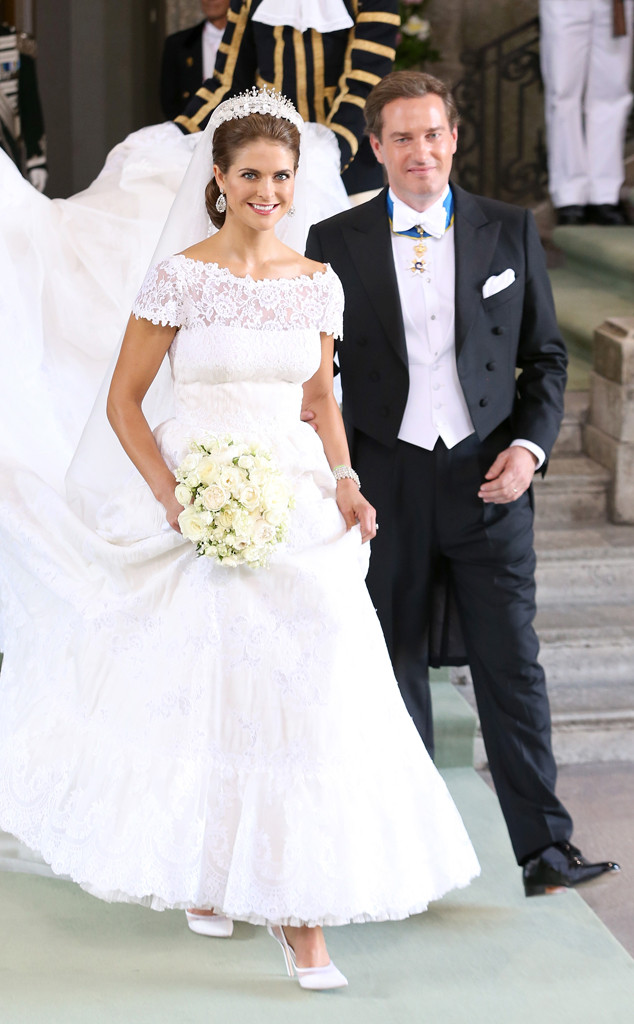
Chris Jackson/Getty Images
Unlike Daniel, O’Neill didn’t become a prince because he decided not to obtain Swedish citizenship—a requirement for a royal title.
And it appears that the decision to not officially join the royal family was quite deliberate, because O’Neill wanted to be able to continue on with his own career—and the persistent demands of royal duty would’ve interfered. He came under fire in 2015 after he missed the king’s 69th birthday party, reportedly prompting him to tell Sweden’s Expressen (from the royal family’s summer home, Solliden Palace), “I have to look after my family and put food on the table. My job doesn’t allow me to decide if I can attend an official engagement one month before it happens.”
They had relocated to Stockholm from New York and he and Madeleine had planned on moving to London, O’Neill said, but then their first child, Princess Leonore, was born in February 2014 and they had just welcomed son Prince Nicolas that June. Perhaps London in two years’ time, he said.
“I don’t want to be alone in my hotel room every night,” O’Neill added. “I want to go home to my family and have dinner together. Nothing else matters more.”

Anna-Lena Ahlström/Royal Court, Sweden
It didn’t even take that long. In the fall of 2015, the palace announced that Her Royal Highness had relocated to London—though they did return to Sweden for the birth of their third child, then-Princess Adrienne, in March 2018.
In the wake of the king’s proclamation, Adrienne, Nicolas and Leonore, as well as Prince Carl’s kids, Alexander and Gabriel, will no longer be referred to as His or Her Royal Highness, and they aren’t required to partake in official royal duties. Nor will they have access to taxpayer funds.
“This change has been planned for a long time,” Madeleine wrote on Instagram (per the Daily Mail’s translation from Swedish) next to a photo of herself with the kids. “Chris and I think it is good that our children now have a greater opportunity to shape their own lives in the future as individuals.”
Carl and Sofia also supported the decision, writing on their account, “We see this as positive as Alexander and Gabriel will have freer choices in life.”
We know of some spare heirs in another country who can relate.
(Originally published Oct. 5, 2017, at 4 a.m. PT)
